Have you heard a lot about the phrase HVAC? So what is HVAC?
1. HVAC system definition
HVAC stands for heating, ventilating, and air conditioning collectively referred to as air conditioning system.
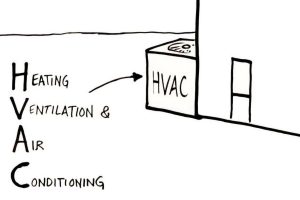
2. Purpose of the HVAC system
- Adjust the temperature of the room
- Provide cool air in the room
- Remove contaminants from the air by using filters at different stages
- Efficient raw material operation
3. Application of HVAC system
HVAC is applied in many areas of our daily life such as air conditioning and ventilation systems in high-rise buildings, shopping centers, villas, apartments as well as townhouses.
In addition, HVAC is also used in heavy industries such as power plants, aircraft, spacecraft …
4. Structure of HVAC
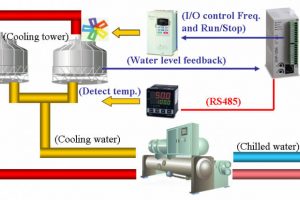
4.1. Heating
Used to generate heat (warmth) in buildings or commercial centers, this is usually done by a central heating system.
The general structure of the heating system includes:
- Boilers
- Fireplace or heat pump: Used to heat water, steam or possibly air in a central location such as: a fireplace room in a house, a mechanical room in a large building. The hot steam can be transferred by convection, heat conduction or radiation.
Or you can use the basic pneumatic system and heat exchange cycle as follows:
- When it detects that your house is too cold, the system sends a signal to the activity controlled heater to bring warm air back to all rooms using a heater or direct blown air conditioner. or air duct.
- Hot supply when it’s cold and cool when it’s hot. That is the simple principle of the HVAC air-conditioning system. There is a simple everyday requirement that someone regulate the ambient temperature. But sometimes, the air conditioner is not running or your heating system is not working. Let’s look at how to solve some of those problems and delve into the different systems to see how they work to better understand the HVAC system and avoid these problems from occurring.
- Forced air HVAC systems are the most common type of home. The most basic of the basics is that your HVAC system is designed to suck air from the intake valve, heat the air and then push it through the duct and out into the vents. If you are seeing spikes of dust jumping from the vents, change your filters and vacuum the inlet valve to stop them. If dust is still coming out, you need to clean your pipes.
- Your forced gas system will be either gas or electrical. If you have gas, you will need the warning light to be constantly lit. The flame will appear blue. If you can’t see the warning light, nothing heats the air to blow through your vents. With electricity, if your home has electricity, heat and air will run into your home. If not, check breakers, breakers.
- Principle: Each heat pump has an outdoor condenser unit and an indoor evaporative coil unit. Heat is transferred from one unit to another. When this liquid is compressed, it is a high-pressure, high-temperature liquid. If it is allowed to expand (depressurize) it turns into a low-temperature, low-pressure gas. 3-phase process: liquid -> High pressure gas -> Low pressure gas. The gas then absorbs heat. The heat pump cools from the outdoor air and delivers it during winter. Cold air contains a lot of heat, although this sounds counterintuitive and weird. They do the opposite in winter. There is still a fan, like in a forced air system, that blows hot or cool air into the ducts.
- Geothermal heat pumps perform the same functions as a conventional pump, but they use the natural temperature of the earth for cooling and warming rather than gas or electricity. The tube is run in the ground and this same coolant is heated by the earth’s temperature and then delivered to the home. This process is more environmental because it uses less energy and has no fossil fuels.
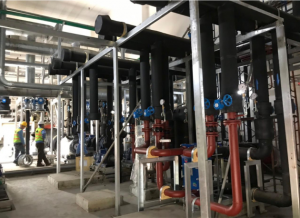
4.2. The ventilation system (ventilation)
The job of this system will be to alter or replace the airflow in any space for temperature control or to remove any combination of humidity, odor, smoke, heat, dust, or bacteria inside the air either CO2 and oxygen supplementation.
In many cases, ventilation also involves exchanging the airflow with the outside as well as circulating the airflow in the building.
The ventilation system is considered one of the very important factors in maintaining the quality of the air inside each area in buildings.
How many ventilation methods are available?
Currently, there are 2 main ventilation methods: compulsory ventilation (ventilation fan) and natural ventilation.
Air enters some space, then it recirculates through the inlet and returns to the air handling unit.
Some of the returned air will be consumed and replaced by 10 to 20% fresh outside.
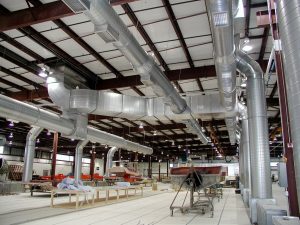
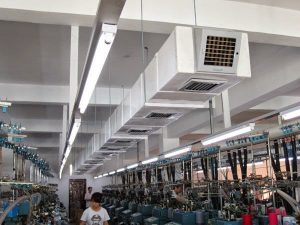
4.3. Air conditioning
Mission: Provide required airflow and humidity for all or part of the building. Normally, buildings with air conditioning installed often have closed doors, opening windows will reduce the cooling efficiency from the air conditioning system.
Air conditioning and refrigeration are usually created by removing heat from within the system. The temperature of the air can be removed by radiation, convection or by transmission through a chiller. Some mediums that help transmit cold such as water, air, ice, chemicals or collectively known as refrigerants. These refrigerants are used in heat pump systems, in which the compressor is used to control the thermodynamic cooling cycle, or in a refrigeration system by using pumps to drive the cooling cycle. transfer a refrigerant (usually water or a glycol mixture).
Provide cool air in summer
The thermostat detects when the inside of the house heats up, and signals the air conditioning system to provide cool air throughout the home.
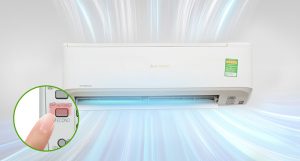

5. Cycle of HVAC system
- Supply Air: The supply of air, which includes cold air and hot air.
- Return Air: Bring the air back.
- Exhaust Air: Exhaust air that is not clean, usually exhausted in restrooms.
6. Signs of HVAC system.
The most noticeable sign when having the HVAC system is the pipes running throughout the building. Currently, pipes serving HVAC usually have 3 different shapes: Square (Rect), Round (Round) and Oval.
However, for easy fabrication and construction, people often use two types of pipes: square and round.
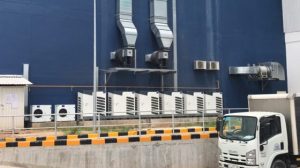
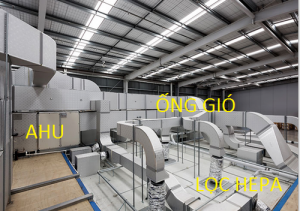
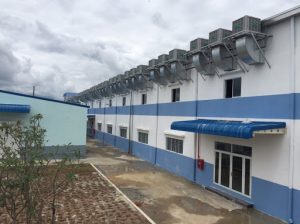
For further information please contact:
Tri Viet Mechanical Electrical Trading Co.,Ltd
Address: 89/1/79 Street No.8, Quarter 5, Tang Nhon Phu B Ward, Thu Duc City, HCM City
Phone: 028.2250.8485
Email: info@trivietme.vn – Website: www.trivietme.vn
